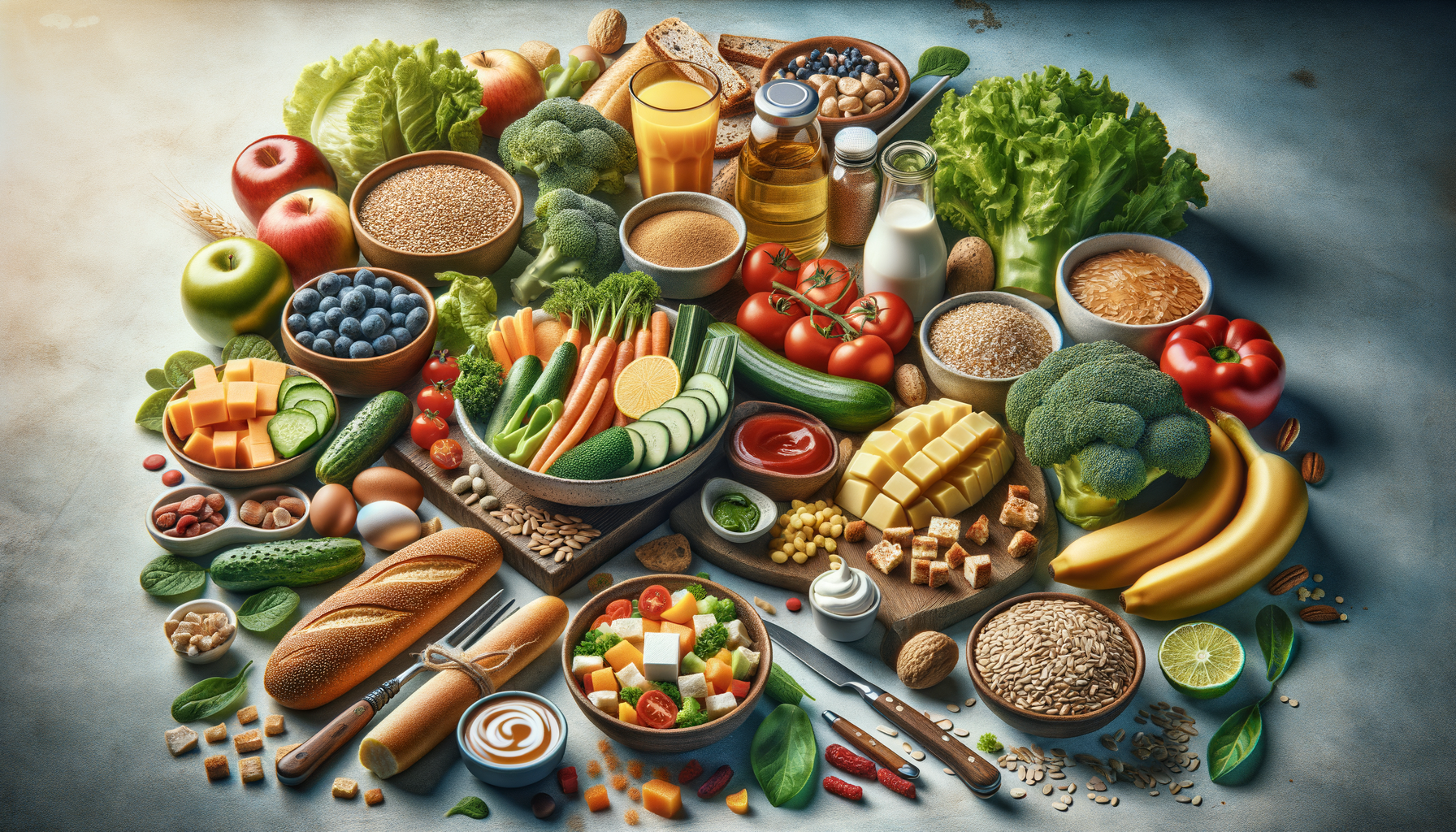Understanding Diabetic Nutrition
Diabetes is a condition that affects how your body processes blood sugar. Managing diabetes effectively often revolves around nutrition, making it crucial to understand the role of food in controlling blood glucose levels. Diabetic nutrition focuses on a balanced intake of carbohydrates, proteins, and fats. Carbohydrates have the most significant impact on blood sugar levels, so it’s important to choose complex carbohydrates like whole grains, vegetables, and legumes, which are digested more slowly and help maintain a stable blood sugar level. Proteins and healthy fats also play a vital role in a diabetic diet, providing essential nutrients and helping to keep you full longer.
Moreover, portion control is a key element in diabetic meal planning. It’s not just about what you eat, but also how much you consume. Using tools like the plate method, where half of your plate is filled with non-starchy vegetables, a quarter with lean protein, and a quarter with whole grains, can be an effective strategy. This approach ensures a balanced intake without overloading on carbohydrates.
In addition to macronutrient balance, micronutrients such as vitamins and minerals are also essential. Foods rich in fiber, such as fruits, vegetables, and whole grains, can improve blood sugar control and reduce the risk of heart disease. A well-rounded diabetic diet not only helps in managing blood sugar levels but also supports overall health and well-being.
Meal Planning for Diabetes
Meal planning is a cornerstone of effective diabetes management. It involves selecting foods that help maintain blood sugar levels within the target range. A practical approach to meal planning includes considering the glycemic index (GI) of foods, which measures how quickly a food raises blood sugar levels. Foods with a low GI, such as oats, legumes, and most fruits, are digested more slowly and have a more gradual impact on blood sugar.
Another important aspect is timing your meals and snacks. Eating at regular intervals helps maintain consistent blood sugar levels throughout the day. Skipping meals can lead to blood sugar spikes or drops, which can be harmful. Including healthy snacks between meals can also prevent overeating and help stabilize blood sugar.
Creating a weekly meal plan can simplify the process. Start by listing out meals and snacks for each day, ensuring a variety of nutrients and flavors. Incorporate seasonal produce to keep meals interesting and nutritious. This planning not only aids in diabetes management but also saves time and reduces stress around meal preparation.
Breakfast Options for Diabetics
Breakfast is an essential meal for everyone, but for those with diabetes, it sets the tone for blood sugar control throughout the day. A nutritious breakfast can help prevent mid-morning hunger and maintain energy levels. Some excellent breakfast options include oatmeal topped with nuts and berries, Greek yogurt with a sprinkle of flaxseeds, or an omelet loaded with vegetables.
Each of these options provides a balance of carbohydrates, protein, and healthy fats, which are crucial for managing blood sugar levels. Oatmeal, for instance, is a whole grain that offers soluble fiber, helping to slow down digestion and the release of sugar into the bloodstream. Adding nuts or seeds introduces healthy fats and protein, further enhancing the meal’s nutritional profile.
For those who prefer savory breakfasts, a vegetable omelet with a side of whole-grain toast can be a satisfying option. Eggs provide high-quality protein, while vegetables add fiber and essential vitamins. Whole-grain toast offers complex carbohydrates that are digested slowly, providing sustained energy. These breakfast choices not only support blood sugar management but also contribute to overall health.
Lunch and Dinner Ideas for Diabetics
Lunch and dinner are opportunities to incorporate a variety of nutrients into your diet. For lunch, consider a quinoa salad with mixed greens, cherry tomatoes, cucumber, and a sprinkle of feta cheese. Quinoa is a whole grain that provides protein and fiber, while the vegetables add vitamins and minerals. A light vinaigrette dressing can enhance flavor without adding excessive calories.
Dinner can be equally satisfying with options like grilled salmon served with steamed broccoli and a side of brown rice. Salmon is rich in omega-3 fatty acids, which are beneficial for heart health, while broccoli offers fiber and antioxidants. Brown rice is a whole grain that provides complex carbohydrates, making it a better choice for blood sugar control compared to white rice.
Incorporating a variety of colors and textures in your meals not only makes them more appealing but also ensures a range of nutrients. These meal ideas demonstrate that managing diabetes doesn’t mean sacrificing flavor or variety. By choosing nutrient-dense foods, you can enjoy delicious meals while keeping your blood sugar levels in check.
Snacks and Desserts for Diabetics
Snacking can be part of a healthy diabetic diet if done wisely. The key is to choose snacks that provide nutrition without causing blood sugar spikes. Some suitable snack options include a small handful of almonds, a piece of fruit with nut butter, or carrot sticks with hummus. These snacks offer a balance of protein, healthy fats, and carbohydrates, making them satisfying and nutritious.
When it comes to desserts, moderation is important. Opt for options that are lower in sugar and higher in fiber. Baked apples with a sprinkle of cinnamon and a dollop of Greek yogurt can be a delightful treat. Alternatively, a small serving of dark chocolate can satisfy a sweet tooth while providing antioxidants.
It’s also beneficial to experiment with recipes that use natural sweeteners like stevia or monk fruit, which have little to no impact on blood sugar levels. By making thoughtful choices, you can enjoy snacks and desserts without compromising your health goals. Remember, the focus is on balance and moderation, ensuring that your diet supports both your diabetes management and overall well-being.




Leave a Reply